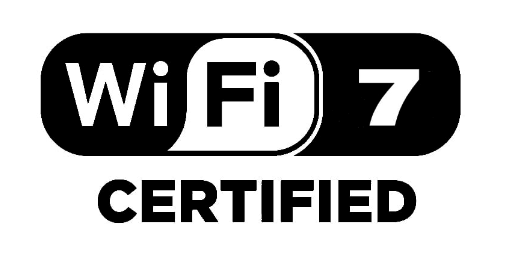Wi-Fi 7 soon ready for rollout

In a groundbreaking announcement, the Wi-Fi Alliance has revealed that the long-awaited Wi-Fi 7 standard, officially known as IEEE 802.11be, is expected to reach its final form in the first quarter of 2024. This signals a significant advance from its predecessor, Wi-Fi 6, and promises significant improvements in wireless local area networks (WLANs).
There are already products on the market with the WiFi 7 label on the box, but officially the final form of the standard has not yet been certified. However, we have come a step closer to that now with the announcement from the Wi-Fi Alliance.
Wi-Fi 7's theoretical strength is impressive with data transfer speeds of up to 46 gigabits per second. second. However, it is important to note that these figures represent theoretical maximums and do not necessarily reflect performance in reality. In comparison, Wi-Fi 6 aimed for a theoretical speed of 20 gigabits per second. second. While these kinds of numbers may seem colossal, their practical impact on daily consumer use is yet to be fully realized.
Operating within the familiar frequency ranges of 2.4 gigahertz, 5 gigahertz and 6 gigahertz, Wi-Fi 7 introduces a ground-breaking feature: multi-link operation. This innovation has the potential to significantly reduce network load and significantly reduce latency. Devices utilizing Wi-Fi 7 can utilize all three frequency bands at the same time, ensuring a smoother and more efficient data transfer experience.
One of the highlighted uses of Wi-Fi 7 is its suitability for new technologies such as augmented reality (AR) devices. The standard's robust capabilities also position it as an ideal solution for high-definition video streaming and cloud computing. With the increasing adoption of AR applications and the growing demand for seamless streaming experiences, Wi-Fi 7 emerges as a crucial facilitator of these technological advances.
It is important to note that Wi-Fi 7 maintains backward compatibility, ensuring support for devices compliant with previous standards. However, this compatibility is limited to the framework defined by these earlier standards.
While the Wi-Fi 7 standard is getting ready for its official debut, the previous standard WiFi 6 is still not widely adopted by the vast majority of mainstream consumers. However, the development is, as always, exciting to follow.
Latest network
-
17 Marnetwork
-
16 Decnetwork
ASUS ZenWiFi BT10
-
24 Maynetwork
ASUS ROG Rapture GT-BE98
-
16 Maynetwork
Intel opens for PC connection via Thunderbolt
-
22 Marnetwork
Ultra Ethernet Consortium expands to 55 members
-
26 Jannetwork
MSI WiFi 6E USB-adapter
-
16 Decnetwork
Wi-Fi 7 soon ready for rollout
-
23 Junnetwork
ASUS RT-AX59U
Most read network
Latest network
-
17 Marnetwork
Netgear Nighthawk M3
-
16 Decnetwork
ASUS ZenWiFi BT10
-
24 Maynetwork
ASUS ROG Rapture GT-BE98
-
16 Maynetwork
Intel opens for PC connection via Thunderbolt
-
22 Marnetwork
Ultra Ethernet Consortium expands to 55 members
-
26 Jannetwork
MSI WiFi 6E USB-adapter
-
16 Decnetwork
Wi-Fi 7 soon ready for rollout
-
23 Junnetwork
ASUS RT-AX59U






